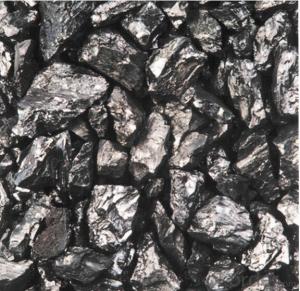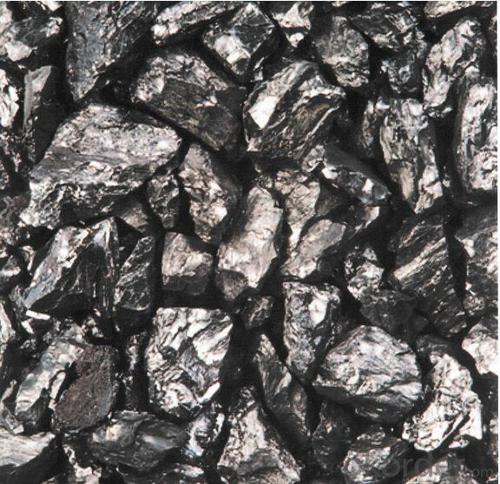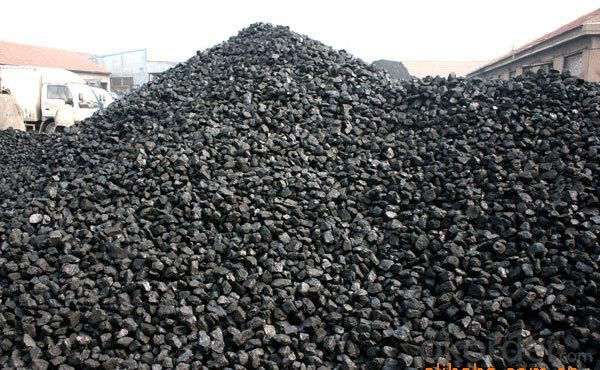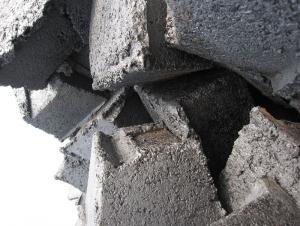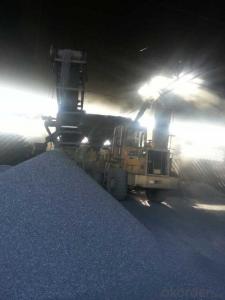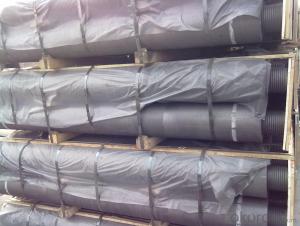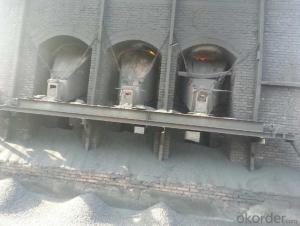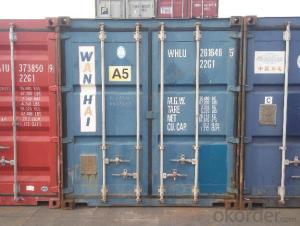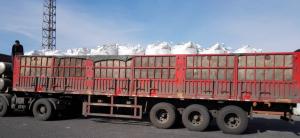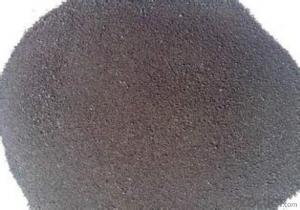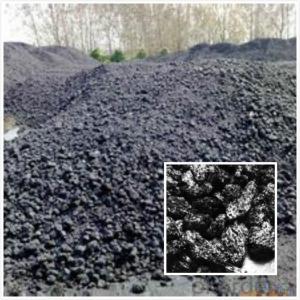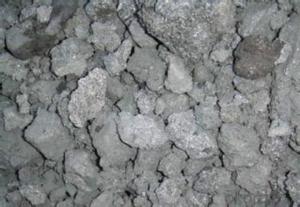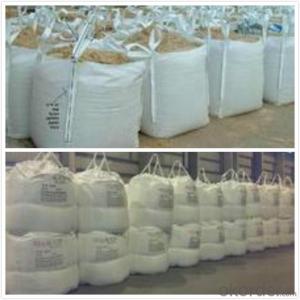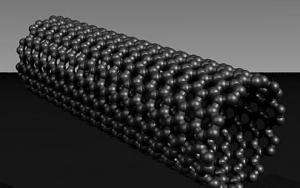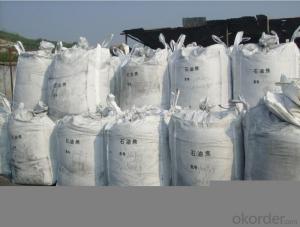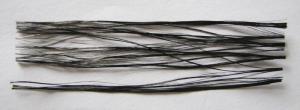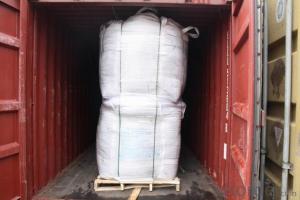Calcined Petroleum Coke Used as Carbon Injection
- Loading Port:
- Tianjin
- Payment Terms:
- TT or LC
- Min Order Qty:
- 20 m.t.
- Supply Capability:
- 10000 m.t./month
OKorder Service Pledge
OKorder Financial Service
You Might Also Like
Quick Details
Place of Origin: Ningxia, China (Mainland)
Application: steel making
Shape: granule
Dimensions: FC90-95%
Product Type: Carbon Additive
C Content (%): 90-95% MIN
Working Temperature: -
S Content (%): 0.5%MAX
N Content (%): -
H Content (%): 0.6%MAX
Ash Content (%): 8.5%MAX
Volatile: 2%MAX
ADVANTAGE: low ash & sulfur
COLOR: Black
RAW MATERIAL: TaiXi anthracite
Packaging & Delivery
| Packaging Details: | In 1MT plastic woven bag. |
|---|---|
| Delivery Detail: | 30-40DAYS |
Specifications Calcined Petroleum Coke Used as Carbon Injection Carbon Additve low Ash,S,P Structure Calcined Petroleum Coke Used as Carbon Injection Shape: granule Dimensions: FC90-95% Product Type: Carbon Additive C Content (%): 90-95% MIN Working Temperature: - S Content (%): 0.5%MAX N Content (%): - H Content (%): 0.6%MAX Ash Content (%): 8.5%MAX Volatile: 2%MAX ADVANTAGE: low ash & sulfur COLOR: Black RAW MATERIAL: TaiXi anthracite Feature Calcined Petroleum Coke Used as Carbon Injection Specifications (%): Grade F.C Ash V.M Moisture S Size CR-95 ≥95 <4 <1 <1 <0.3 0-30mm CR-94 ≥94 <4 <1 <1 <0.3 CR-93 ≥93 <6 <1 <1 <0.4 CR-92 ≥92 <7 <1 <1 <0.4 CR-91 ≥91 <8 <1 <1 <0.4 CR-90 ≥90 <8.5 <1.5 <2 <0.4 Image Calcined Petroleum Coke Used as Carbon Injection FAQ: Calcined Petroleum Coke Used as Carbon Injection Why we adopt carbon additive? Carbon Additives used as additive in steel making process. It made from well-selected Tai Xi anthracite which is low in content of ash, sulphur, phosphorus, high heat productivity, high chemically activation. Mainly industry property of it is: instead of traditional pertroleum coal of Carbon Additives, reduce the cost of steelmaking. Advantage: Calcined Petroleum Coke Used as Carbon Injection 1.High quality and competitive price. 2.Timely delivery. 3.If any item you like. Please contact us. Your sincere inquiries are typically answered within 24 hours.
FC>95% ASH<4% S<0.3%
It is made from TaiXi anthracite.
instead of pertrol coke reduce the cost
As buyer's request.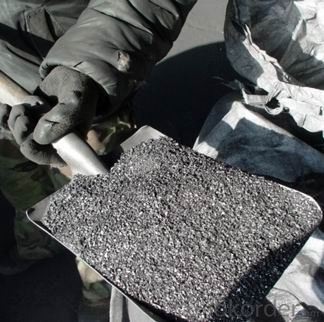
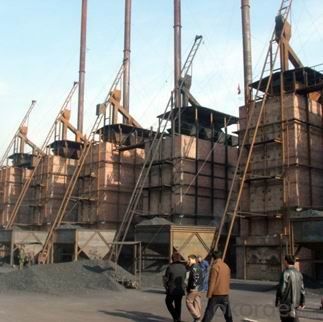
- Q: What are the health effects of carbon pollution?
- Carbon pollution, specifically in the form of carbon dioxide (CO2) emissions, has a range of health effects on both humans and the environment. The primary health concern associated with carbon pollution is its contribution to climate change. As CO2 is a greenhouse gas, it traps heat in the Earth's atmosphere, leading to global warming and subsequently altering weather patterns. This can result in more frequent and severe heatwaves, hurricanes, and other extreme weather events. These events have direct and indirect health impacts, including heat-related illnesses, injuries, displacement, and the spread of infectious diseases. Furthermore, carbon pollution is closely linked to air pollution, which has significant health consequences. The burning of fossil fuels, such as coal and oil, releases not only CO2 but also a range of toxic air pollutants, including sulfur dioxide, nitrogen oxides, particulate matter, and volatile organic compounds. These pollutants can cause respiratory problems, such as asthma, bronchitis, and other chronic obstructive pulmonary diseases (COPD). Additionally, they can trigger cardiovascular issues and increase the risk of heart attacks and strokes. The health effects of carbon pollution are not limited to the respiratory and cardiovascular systems. Increased temperatures and changes in precipitation patterns can also impact water and food supplies, leading to waterborne diseases, reduced crop yields, malnutrition, and food insecurity. Moreover, the environmental consequences of carbon pollution, such as deforestation and ocean acidification, further exacerbate health risks. Deforestation reduces the availability of clean air and the natural carbon sinks that absorb CO2, while ocean acidification damages marine ecosystems, affecting the availability of fish and other seafood, which are vital sources of nutrition for many communities. To mitigate the health effects of carbon pollution, it is essential to reduce greenhouse gas emissions by transitioning to cleaner and renewable energy sources, implementing energy-efficient practices, and adopting sustainable land-use and agricultural practices. Additionally, investing in healthcare systems and public health infrastructure to address the direct and indirect health impacts of carbon pollution is crucial.
- Q: What are the advantages of carbon-based fertilizers?
- Farmers and gardeners favor carbon-based fertilizers for several reasons. Firstly, these fertilizers, such as compost and manure, are organic and derived from natural sources, devoid of synthetic chemicals. This eco-friendly quality reduces the risk of water pollution and soil degradation. Secondly, carbon-based fertilizers contain ample organic matter, enhancing soil structure and water retention. This proves especially helpful in areas with infertile soil or frequent droughts, as it conserves moisture and prevents nutrient loss. Furthermore, these fertilizers foster the growth of beneficial microorganisms in the soil. These microorganisms gradually break down organic matter, releasing essential nutrients and ensuring a steady supply to plants. The result is improved plant health and a decreased likelihood of nutrient imbalances or deficiencies. Additionally, carbon-based fertilizers prove cost-effective in the long run. Though they may require more effort and time initially, they can be produced on-site through composting or sourced locally from farms or livestock operations. This reduces the need for expensive chemical fertilizers and minimizes transportation costs. Lastly, carbon-based fertilizers aid in carbon sequestration and contribute to combating climate change. By utilizing organic waste materials as fertilizers, they divert them from landfills, where they would emit greenhouse gases. Instead, they are recycled into the soil, increasing its carbon content and promoting soil health. In summary, carbon-based fertilizers offer numerous advantages in terms of sustainability, soil fertility, cost-effectiveness, and environmental impact. Their usage can yield healthier plants, improved soil quality, and a more sustainable and resilient agricultural system.
- Q: How does carbon affect the formation of tornadoes?
- Carbon does not directly affect the formation of tornadoes. Tornadoes are primarily caused by the interaction of warm, moist air from the surface and cold, dry air from the upper levels of the atmosphere, resulting in strong updrafts and rotating air columns. Carbon, as an element, does not play a significant role in this process. However, indirectly, carbon emissions and human-induced climate change can impact the overall weather patterns, including the frequency and intensity of tornadoes. Increased carbon dioxide in the atmosphere, primarily from the burning of fossil fuels, contributes to global warming. This, in turn, leads to changes in temperature and moisture patterns, which can influence the conditions conducive to tornado formation. The warming of the atmosphere due to increased carbon dioxide levels can lead to more instability in the atmosphere, creating favorable conditions for severe thunderstorms, which can spawn tornadoes. Additionally, the increased moisture content in the warmer atmosphere can provide more fuel for these storms, potentially enhancing their strength. It is important to note, however, that the relationship between carbon emissions and tornadoes is complex and still an area of ongoing research. While a connection between climate change and tornadoes is plausible, it is challenging to attribute individual tornadoes to carbon emissions alone, as tornadoes are influenced by various meteorological factors. In summary, carbon does not directly impact the formation of tornadoes, but the increased carbon emissions and resulting climate change can indirectly influence the conditions that contribute to tornado formation. Further scientific research is needed to fully understand the relationship between carbon emissions, climate change, and tornado activity.
- Q: How are carbon fibers produced?
- Carbon fibers are created using a multi-step process known as carbonization. To begin, a precursor material, typically a polymer-based substance like polyacrylonitrile (PAN), rayon, or pitch, is utilized. The initial step entails spinning the precursor material into lengthy, thin fibers. This can be accomplished through different methods, such as melt spinning, dry spinning, or wet spinning, depending on the specific precursor employed. Once the fibers are formed, they undergo a stabilization process. This involves subjecting the fibers to heat in the presence of oxygen at a relatively low temperature, usually around 200-300 degrees Celsius. Stabilization serves to eliminate any volatile components from the fibers and align the molecular structure in a manner that enhances its resistance to heat and strength. Following stabilization, the fibers are exposed to high-temperature treatment called carbonization. This process occurs in an oxygen-deprived furnace, typically at temperatures exceeding 1000 degrees Celsius. During carbonization, the fibers are heated to a point where a majority of the non-carbon atoms are expelled, resulting in a highly pure carbon structure. The final step in carbon fiber production involves surface treatment. This entails the application of a coating or treatment to enhance the fibers' bonding properties and adhesion with other materials. Surface treatment can be achieved through various methods, including sizing, coating, or plasma treatment. In summary, the production of carbon fibers combines spinning, stabilization, carbonization, and surface treatment processes to yield fibers with exceptional strength, stiffness, and lightness. These properties make carbon fibers highly sought after in diverse industries, including aerospace, automotive, sports, and construction.
- Q: How is carbon used in the production of solar cells?
- Solar cells do not directly utilize carbon in their production. Instead, semiconductor materials like silicon or cadmium telluride are typically used to create solar cells. Nevertheless, carbon-based materials can greatly enhance the efficiency and effectiveness of solar cells. Carbon, in the form of carbon nanotubes, can be employed as a see-through electrode within solar cells. Carbon nanotubes possess exceptional electrical conductivity and optical transparency, making them an ideal substitute for conventional transparent conductive materials such as indium tin oxide. Moreover, carbon-based materials can serve as a protective coating or encapsulation layer, safeguarding solar cells against moisture, corrosion, and mechanical strain. Carbon-based materials also have the potential to revolutionize solar cell technology by contributing to the development of cutting-edge solar cell types such as organic solar cells or perovskite solar cells. These advanced solar cells utilize carbon-based compounds in their active layers. In summary, although carbon is not directly involved in the production of solar cells, it plays a critical role in enhancing their performance and enabling the progress of more sophisticated solar cell technologies.
- Q: How do carbon emissions contribute to extreme weather events?
- Carbon emissions contribute to extreme weather events through the process of climate change. When carbon dioxide and other greenhouse gases are released into the atmosphere, they trap heat from the sun and cause the Earth's average temperature to rise. This phenomenon, known as global warming, is largely driven by human activities such as burning fossil fuels for energy, deforestation, and industrial processes. As the planet warms, it disrupts the delicate balance of weather patterns, leading to an increase in extreme weather events. Here are a few ways carbon emissions contribute to these events: 1. Heatwaves: Increased carbon emissions lead to higher temperatures, which in turn increase the frequency and intensity of heatwaves. This can result in prolonged periods of extreme heat, posing risks to human health, agriculture, and ecosystems. 2. Hurricanes and tropical storms: Warmer ocean temperatures caused by carbon emissions provide more energy to fuel hurricanes and tropical storms. This leads to more intense storms with higher wind speeds and heavier rainfall, resulting in increased destruction and flooding. 3. Droughts: Climate change caused by carbon emissions can alter precipitation patterns, resulting in decreased rainfall and increased droughts in certain regions. These prolonged periods of water scarcity can have severe impacts on agriculture, water supplies, and ecosystems. 4. Heavy rainfall and flooding: Global warming intensifies the water cycle, causing more evaporation and moisture in the atmosphere. This leads to heavier rainfall events when precipitation does occur, increasing the risk of flooding and flash floods. 5. Wildfires: Rising temperatures and drier conditions due to climate change create favorable conditions for wildfires. Increased carbon emissions contribute to the length and severity of fire seasons, causing more extensive and destructive wildfires. It is important to note that while carbon emissions contribute to extreme weather events, they are not the sole cause. Other natural climate variability factors, such as El Niño and La Niña, can also influence extreme weather. However, by reducing carbon emissions and transitioning to cleaner energy sources, we can mitigate the impacts of climate change and help prevent further exacerbation of extreme weather events.
- Q: Stability, primary carbon, two carbon, three carbon, four carbon
- From a variety of hydrogen is substituted alkyl free radicals generated in terms of difficulty order can have free radicals for the formation of tertiary carbon free radical secondary carbon free primary carbon free radicals. Alkyl radicals generated methyl easily, can be explained from two aspects: (1) different required to form free radicals when the fracture of C-H the energy, the (CH3) 3C-H fracture, the energy required for the smallest, most easily generated.
- Q: Search for a summary of the importance of carbon in life. If you write well, you can add points,
- People familiar with the organic carbon material more use in daily life and industrial and agricultural production, mainly on gasoline, diesel, kerosene, liquefied gas, natural gas, chemical solvents and fire extinguishing agents such as carbon tetrachloride, carbohydrates (rice, wheat, corn, sorghum, sweet potatoes, potatoes, sugar, fruit, vegetables, paper etc.) chemical fiber, cotton, wood, etc. not all examples.In short, without carbon and its compounds on earth, humans and all living things can not survive and develop, or the earth is a lifeless sphere with only rocks and soil
- Q: What are the main sources of carbon on Earth?
- Both natural and anthropogenic sources contribute to the presence of carbon on Earth. Carbon dioxide (CO2) is naturally released into the atmosphere through processes such as volcanic eruptions, respiration by plants and animals, and the decay of organic matter. Carbon is also found in carbonate rocks in the Earth's lithosphere, formed from marine organisms' shells and skeletons. Anthropogenic sources of carbon primarily arise from the combustion of fossil fuels like coal, oil, and natural gas for energy and transportation purposes. When these fuels are burned, carbon dioxide is emitted, leading to the greenhouse effect and climate change. Deforestation and land-use changes also release carbon stored in trees and vegetation. Furthermore, industrial processes, cement production, and waste management activities contribute to the emission of carbon dioxide and other greenhouse gases. These human activities release carbon that has been sequestered for millions of years, significantly disrupting the natural carbon cycle. In conclusion, although carbon is naturally present on Earth, human actions have greatly amplified its release into the atmosphere, raising concerns about climate change and the urgent need for sustainable practices to reduce carbon emissions.
Send your message to us
Calcined Petroleum Coke Used as Carbon Injection
- Loading Port:
- Tianjin
- Payment Terms:
- TT or LC
- Min Order Qty:
- 20 m.t.
- Supply Capability:
- 10000 m.t./month
OKorder Service Pledge
OKorder Financial Service
Similar products
Hot products
Hot Searches
Related keywords
